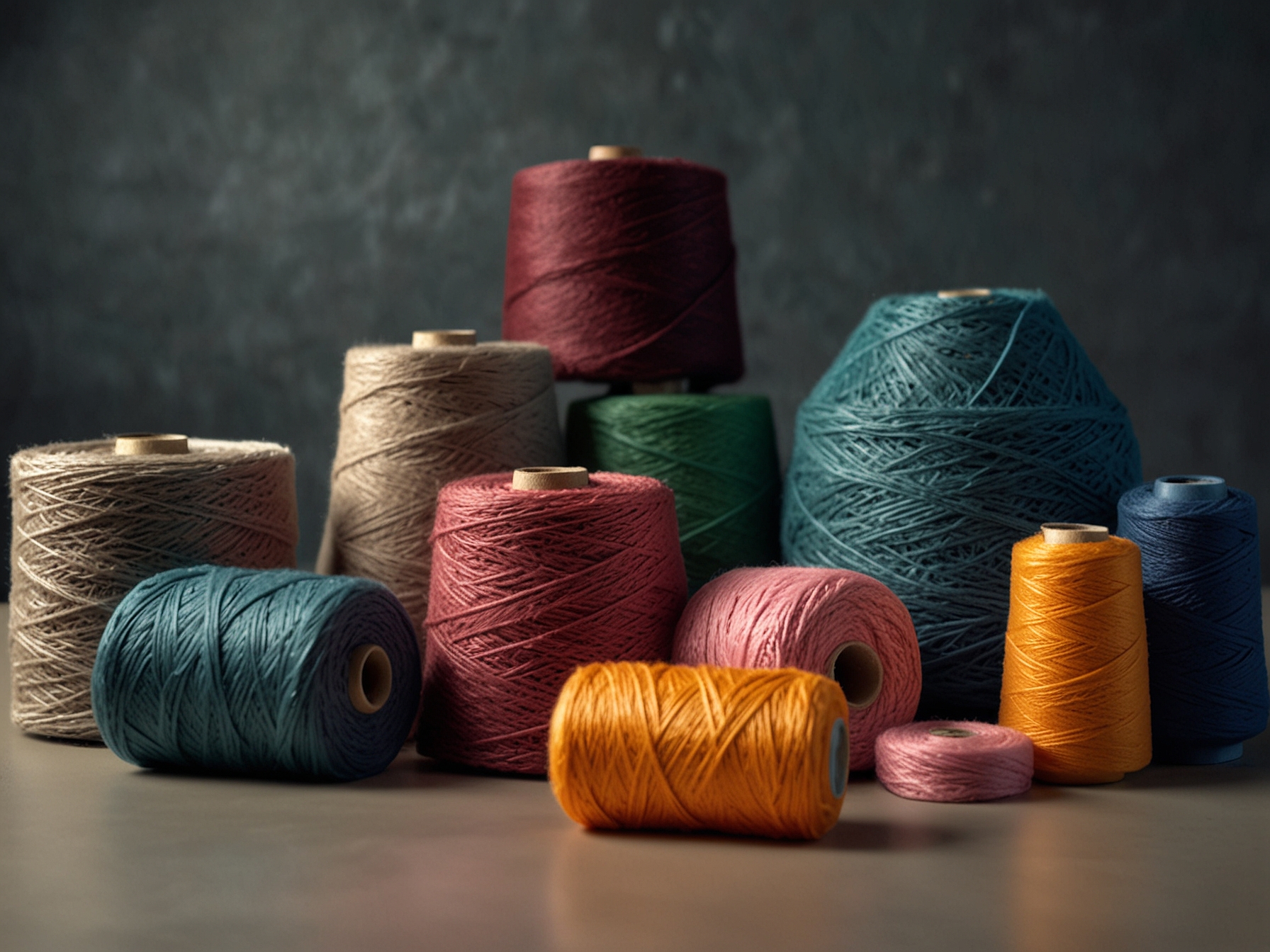Chicago, June 27, 2024 (GLOBE NEWSWIRE) — According to a recent study by MarketsandMarkets, the Global Synthetic Yarn Market is anticipated to grow from USD 234.1 billion in 2024 to an impressive USD 300.5 billion by 2029. This represents a compound annual growth rate (CAGR) of 5.1% over the forecast period. This substantial growth is bolstered by the increasing demand for synthetic yarn in the apparel and furnishing industries. As urbanization continues at a rapid pace and populations migrate towards urban centers, the need for modern and stylish clothing as well as contemporary home furnishings is on the rise, further fueling market expansion.

© FNEWS.AI – Images created and owned by Fnews.AI, any use beyond the permitted scope requires written consent from Fnews.AI
Synthetic yarn, known for its versatility, durability, and affordability, has become a preferred choice in various industries. Its applications range from high-fashion apparel to durable home textiles. The synthetic yarn market is characterized by several material types, including polyethylene terephthalate (PET), polypropylene (PP), nylon, rayon, and acrylic. Each material offers distinct advantages, catering to the different needs of end-users. PET, for instance, is highly appreciated for its strength and resistance to stretching and shrinking, making it suitable for a variety of demanding applications in both apparel and home furnishings.
The resurgence of the fashion industry, coupled with the growing influence of fast fashion, has created a significant demand for synthetic yarn. The trend of fast fashion relies heavily on the rapid production of trendy clothing items, necessitating high volumes of synthetic yarn owing to its cost-effectiveness and quick production turnaround. Moreover, consumers’ preference for sustainable and eco-friendly products has propelled the development of recycled synthetic yarns, adding another dimension to the market’s growth.

© FNEWS.AI – Images created and owned by Fnews.AI, any use beyond the permitted scope requires written consent from Fnews.AI
The home furnishing sector has also witnessed a surge in demand for synthetic yarn. The uptrend in housing and real estate developments, particularly in urban areas, has spiked the need for aesthetically appealing and durable furnishings. Synthetic yarn, used in making carpets, curtains, upholstery, and bed linens, is favored for its resilience to wear and tear, ease of maintenance, and wide range of colors and textures. These attributes make synthetic yarn a highly sought-after material, aligning perfectly with the contemporary lifestyle and changing consumer preferences.
Geographically, the Asia-Pacific region holds a substantial share in the synthetic yarn market, driven by countries like China, India, and Bangladesh, which are pivotal players in the global textile industry. Industrial advancements, increased textile production capabilities, and cost-effective labor force significantly contribute to the market’s growth in this region. Simultaneously, North America and Europe also demonstrate considerable demand, with the US and Germany being key consumers due to their developed textile sectors and high disposable incomes. These regions witness a consistent requirement for synthetic yarn, both in fashion and furnishing applications.
Technological advancements within the textile manufacturing sector have played a pivotal role in the growth of the synthetic yarn market. Innovations such as automated spinning processes, advanced dyeing techniques, and better blending technologies have enhanced the quality and efficiency of synthetic yarn production. These advancements have not only reduced manufacturing costs but also improved the overall performance characteristics of synthetic yarn, making it more competitive against natural yarn alternatives.
Sustainability has emerged as a crucial factor influencing the synthetic yarn market. With the rising awareness about environmental impacts, manufacturers are increasingly adopting sustainable practices. The development of recycled synthetic yarn, produced from post-consumer plastic waste, represents a significant step towards reducing the environmental footprint of textile production. This eco-friendly alternative not only satisfies consumer demand for sustainable products but also aligns with global environmental goals, promoting a circular economy within the textile industry.
The market’s robust growth potential has attracted numerous players, resulting in a competitive landscape. Major companies such as Indorama Ventures, Teijin Limited, and TORAY INDUSTRIES, INC. are investing heavily in research and development to enhance product offerings and cater to the evolving market demands. Strategic collaborations, mergers, and acquisitions are common strategies adopted by these players to expand their market presence and strengthen their competitive edge. Additionally, government policies and trade agreements favoring the textile sector further support the market’s growth trajectory.
Despite the positive outlook, the synthetic yarn market faces challenges such as volatile raw material prices and stringent environmental regulations. The dependency on petrochemical derivatives for synthetic yarn production makes the market susceptible to fluctuations in oil prices, which can impact manufacturing costs. Moreover, stringent regulations concerning environmental conservation and waste management pose significant challenges for manufacturers. To mitigate these challenges, companies are increasingly focusing on developing bio-based and biodegradable synthetic yarn alternatives.
In conclusion, the synthetic yarn market is poised for significant growth in the coming years, driven by rising urbanization, evolving consumer lifestyles, and technological advancements. The increasing preference for synthetic yarn in apparel and home furnishing industries underscores its importance in meeting contemporary market demands. As sustainability becomes a central focus, the development of eco-friendly synthetic yarns will play a crucial role in shaping the future of textile production. With continuous innovation and strategic market movements, the synthetic yarn market is set to reach new heights, offering promising opportunities for stakeholders across the value chain.
Was this content helpful to you?





